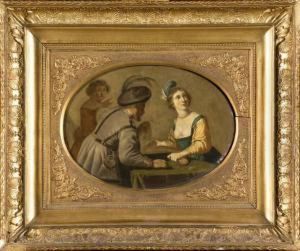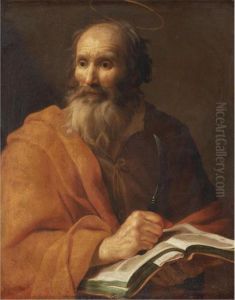Jan Van Bylert Paintings
Jan van Bijlert was a Dutch painter born in Utrecht during the late 16th century, specifically in 1597/98. He was an important figure in the Dutch Caravaggisti movement, which was heavily influenced by the Italian painter Caravaggio. Van Bijlert's early life and training are not thoroughly documented, but it is known that he was the son of a glass painter and that he initially trained with his father.
After his early education, van Bijlert went to France and Italy, where he spent several years. His time in Italy, particularly in Rome, had a significant impact on his artistic style. In Rome, he would have encountered the work of Caravaggio and his followers, which is evident in the use of dramatic chiaroscuro and realistic depiction of figures in his later work.
Upon returning to Utrecht around 1624, van Bijlert established himself as a leading painter. He became a founding member of the Utrecht Guild of St. Luke in 1630 and served as the guild's headman multiple times. His style evolved over the years, and while his early work is heavily Caravaggesque, he later adopted a more classicist approach, influenced by the likes of Abraham Bloemaert.
Van Bijlert's repertoire included genre scenes, historical and mythological paintings, and portraits. His genre scenes often depicted musicians and drinkers, capturing the convivial spirit of the Dutch taverns. However, it is his portraits that are considered some of his finest works, marked by a distinguished and refined presentation of the subjects.
Van Bijlert continued to paint and contribute to the Utrecht art scene until his death in 1671. His work was well-regarded during his lifetime and continues to be appreciated for its contribution to the Dutch Golden Age of painting. Though not as widely known as some of his contemporaries, van Bijlert remains an important figure in the history of Dutch art for his synthesis of Italian influences with Northern European sensibilities.

